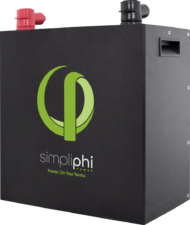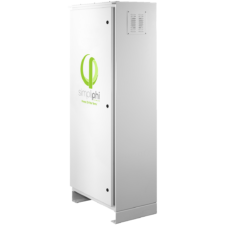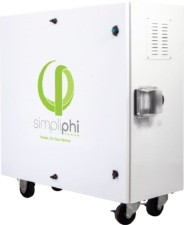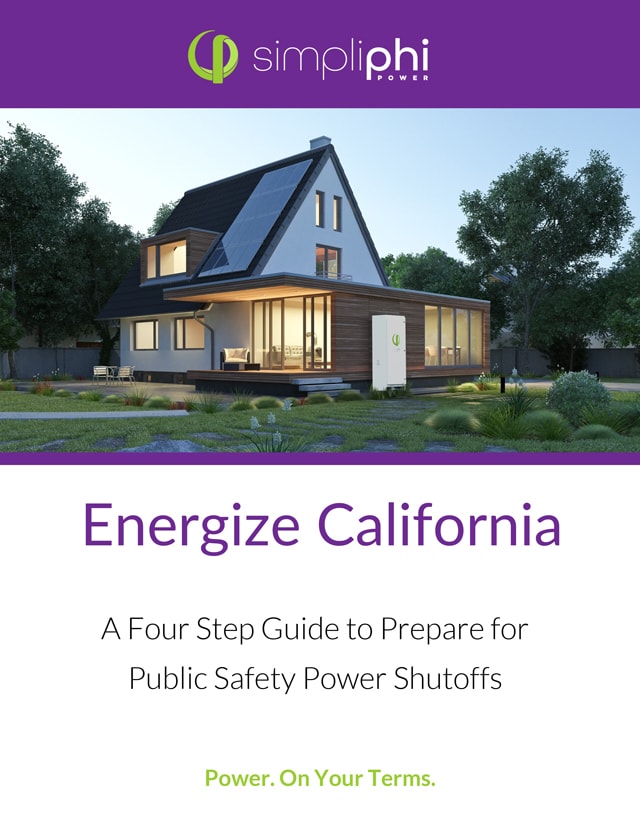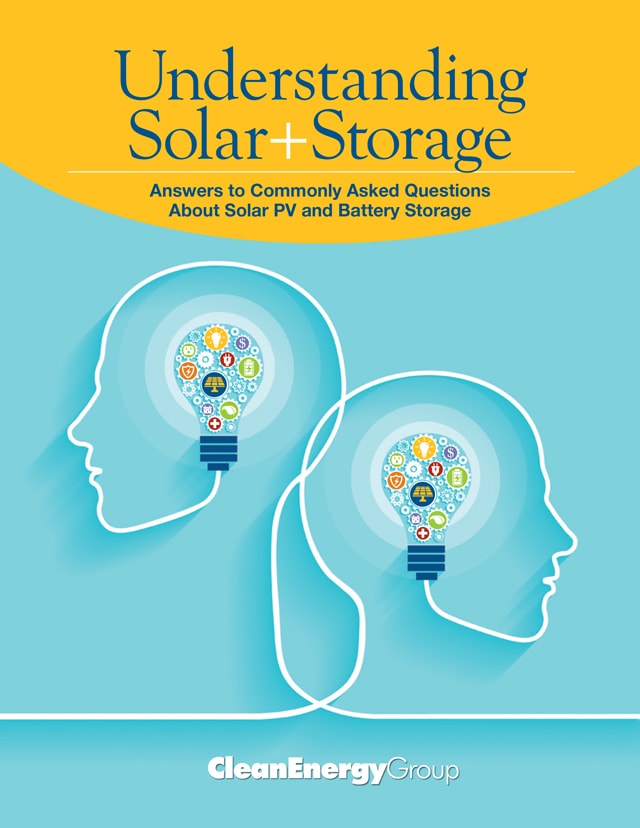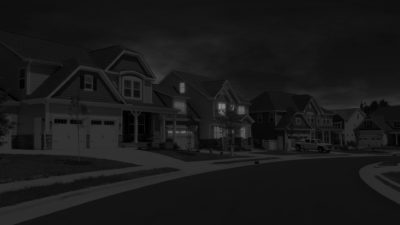
California Public Safety Power Shutoff Survival Guide
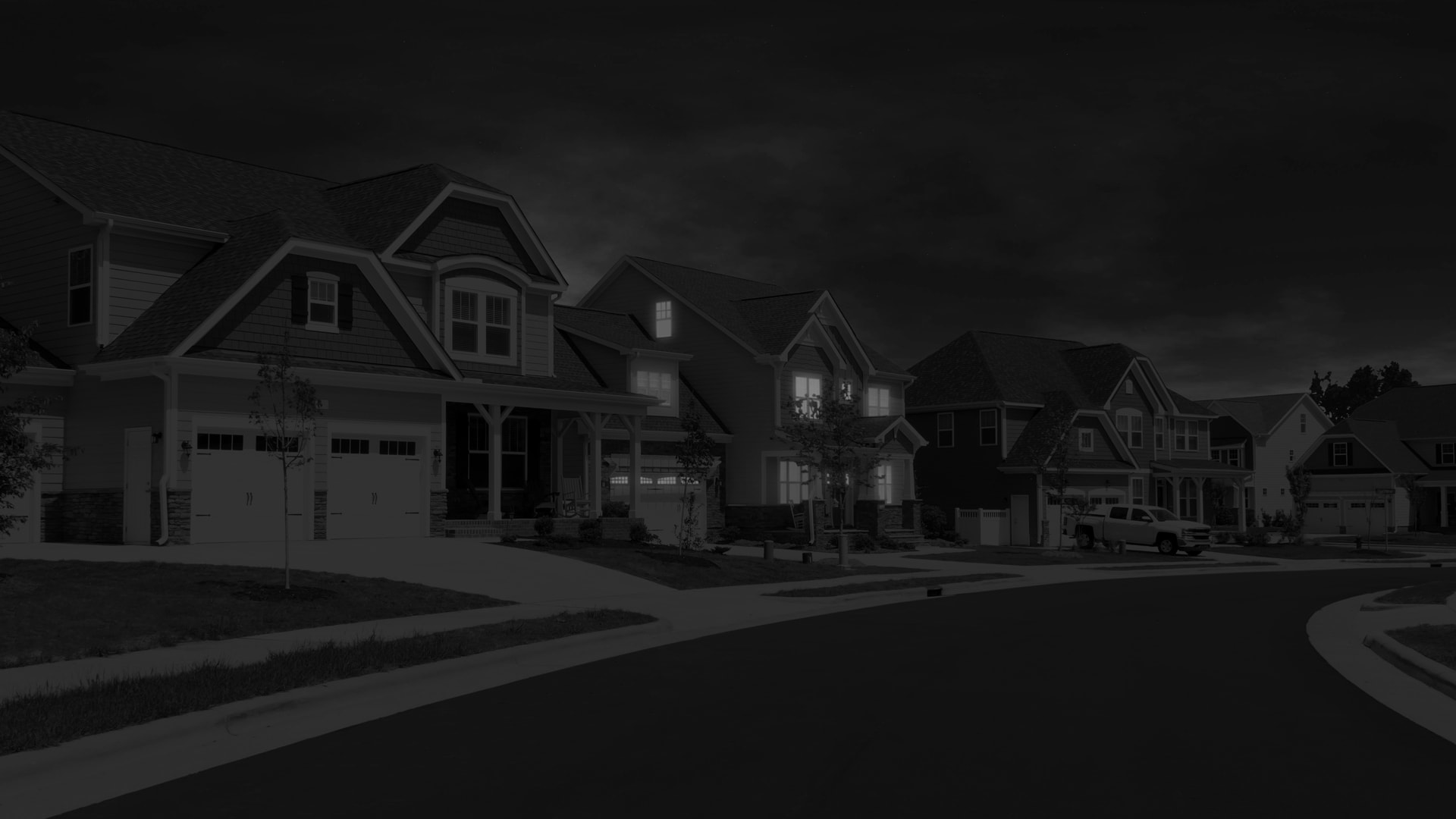
California Public Safety Power Shutoff (PSPS) Survival Guide
Keep The Lights On When The Utility Turns Them Off
SimpliPhi Your Power and Energize California: The Power of Being Prepared During “Public Safety Power Shutoffs” (PSPS)
Now that wildfire season in California is upon us, residents face not only the likelihood that their power may be cut off by a wildfire, but also that their utility may preemptively turn off their power for days or weeks at a time as part of the planned “Public Safety Power Shutoffs” (PSPS).
PG&E, SCE and SDG&E created these shutoffs to mitigate the risk of fire from damaged transmission lines in areas designated “High Fire Threat Districts” (HFTD) where a combination of extreme drought, new vegetation from recent rain and increasingly violent winds threaten the integrity of transmission lines. Approximately 25% of the state’s population – 11 million people – currently live in areas classified as “high fire threat districts”.

During the last two years, more than 16,500 wildfires ignited across California, and in the past 4 years, equipment owned by California’s three largest investor-owned utilities have been deemed responsible for sparking more than 2,000 fires. These utility-caused wildfires and associated damages and lawsuits have motivated PG&E, SCE and SDG&E to implement PSPS and their joint campaign: ‘The Power of Being Prepared’.
But SimpliPhi Wants to Do More.
We are a California company whose Ventura County-based employees and business operations are as vulnerable to Public Safety Power Shutoffs as our neighbors statewide. During the 2017 Thomas Fires and the 2018 Camp and Woolsey fires, we relied personally on the technology we design, manufacture and sell every day. Our own experience inspires our dedication to making sure that every Californian has the ability to safely and reliably generate their own power, store it, and take it with them, on their terms. We are committed to ensuring you are equipped to make it through every utility-mandated PSPS. SimpliPhi your power. Anytime. Anywhere. In your home, apartment, business or on the go.
That is why we have introduced our Energize California program.
If you are one of the approximately 11 million Californians likely to be impacted by PSPS this fire season, SimpliPhi has created this Energize California guide as a resource to help you prepare, and ensure that you are able to keep the lights on, even when the utility turns them off.
Understand Your Backup Power Options
Diesel or gas generators are not the only emergency back-up power available and, when combined with SimpliPhi’s safe, indoor/outdoor battery powered generators (ExprESS & AccESS), precious and often scarce fuel can be preserved during prolonged power shutoffs. SimpliPhi’s residential, mobile and portable backup power storage solutions feature lithium ferro phosphate (LFP), offering significant advantages:
- They are ready when you need them. SimpliPhi’s energy storage and emergency power solutions do not require annual maintenance and only lose <1% of charge on a monthly basis when not in use.
- SimpliPhi’s energy storage can be used indoors or outdoors without ventilation, cooling or the risk of overheating or fire. LFP does not contain cobalt, the source of toxicity, hazards and ‘thermal runaway’ associated with other lithium batteries. LFP is environmentally benign, non-toxic and safe to use as a personal power source — even with extended use.
- Adding a SimpliPhi energy storage solution can improve generator performance, extend its life, save fuel and extend your energy budget during an outage. With SimpliPhi batteries, a generator changes its role from being a source of primary power to a source for charging power. Once the PHI batteries are charged, the generator is turned off until it’s time to charge again
By contrast, consider the constraints using fuel-based generators:
- Most of today’s gas station fuel pumps require electricity to operate. Finding a station that is able to provide fuel during a power shutoff can be incredibly difficult — especially when entire counties and regions are affected. If you are able to find non-electric pumps, expect to wait hours in line to buy fuel and pay vastly inflated prices before the pumps run out entirely.
- In the unlikely scenario that home improvement retail stores are able to remain open without power, they will probably not have enough generators in stock for the increased demand during outages.
- Fuel-based generators release carbon monoxide and toxic pollutants, making it unsafe to use them inside a home, in a garage or under a carport or covered porch. Opening windows or opening a garage door does not help — the carbon monoxide in generator exhaust can sicken or kill.
Understand Your Solar Array As Back-Up
If you have installed grid-tied solar without energy storage, you will lose power during an outage. Grid-tied solar arrays feed electricity to the grid, not your home. Adding as few as two PHI batteries to an existing solar installation will allow you to disconnect or ‘island’ from the grid during a blackout and continue to generate, store and use your own power until the utility service is restored.
Understand How Much Power Your Will Need
How much electricity do you want at your disposal when the grid goes down? Storage solutions are as diverse as the range of customers who need them. As a homeowner, you might decide to create a residential energy storage system sized to provide power only for critical loads like the refrigerator, a home medical device, a computer, cell phone charging, lights and the HVAC system, while another could decide to install a large PHI battery bank sized to support a home’s entire utility load. Yet another could decide to keep it simple and select a turn-key mobile energy storage solution to take with them in the event of an evacuation, like the ExprESS or Genny Emergency Kits. These turn-key solutions are also ideal for people who rent homes, condominiums or apartments.
| Model | Type | Features |
|---|---|---|
|
PHI Batteries |
Hard wired* |
|
|
AccESS Energy Storage System |
Turn-key hard wired* |
|
|
ExprESS Mobile AC Generator |
Turn-key mobile or hard wired* |
|
|
Genny Emergency Kits |
Portable |
|
*Initial installation by a licensed C10 or C46 electrician required
SimpiPhi’s applications engineers and I.Q. Certified Installers can help you calculate how much energy storage capacity you will need and what solution is best for you. Little and Big Genny Emergency Kits can be purchased directly from Amazon.
Know Your Manufacturer
When it comes to emergency power, failure is not an option. SimpliPhi’s energy storage and management solutions have been proven in the field for a decade, including by the U.S. military in Iraq and Afghanistan.
Safety is also critical. SimpliPhi’s energy storage solutions are ideally suited for use in regions prone to wildfires because they feature the safest, cobalt-free lithium ion chemistry: there are no toxic hazards, no fumes and no risk of fire from the battery itself. Many consumers do not realize that most other lithium ion batteries contain cobalt — which can be incredibly dangerous in a fire because there isn’t a way to extinguish a cobalt battery that catches fire, and because cobalt fires produce deadly, toxic fumes.
Not only does SimpliPhi have a proven global track record you can trust, our California operations lend us unique insight into the wildfire and PSPS problems and the ideal solutions that home and business owners want and need to be resilient and survive with minimal hardship. Through Energize California, we’re committed to ensuring every Californian is truly able to realize the power of being prepared.
ADDITIONAL RESOURCES
Are you Prepared? Powering Through Hurricanes, Wildfires and Other Emergencies
Palos Verdes Homeowner Prepares for Wildfires with Solar+Storage
Northern Californians Opt for Reliable Backup Power During Wildfire Season
SimpliPhi Helps Governor Brown Go Off-Grid
Florida Homeowners Add Battery Backup to Prepare for Next Storm
AccESS Provides Safer, More Reliable Alternative to Generators in Puerto Rico

